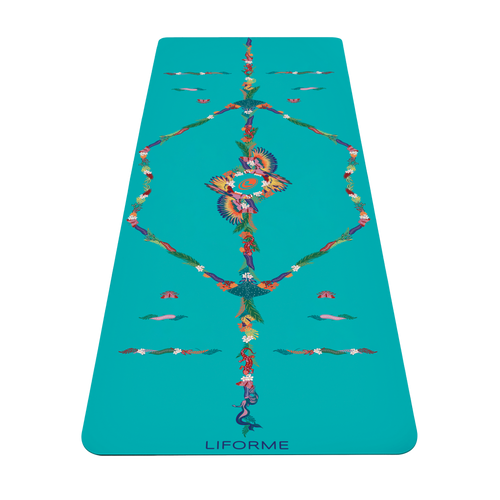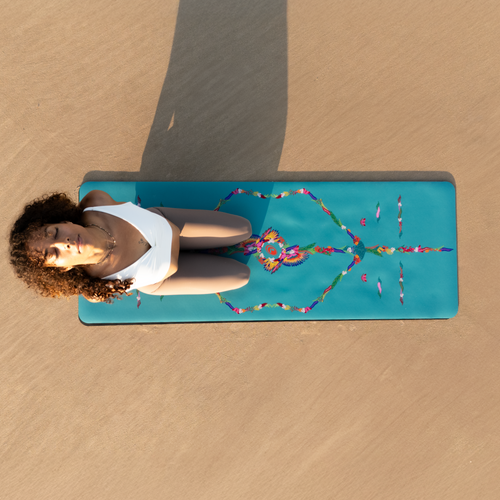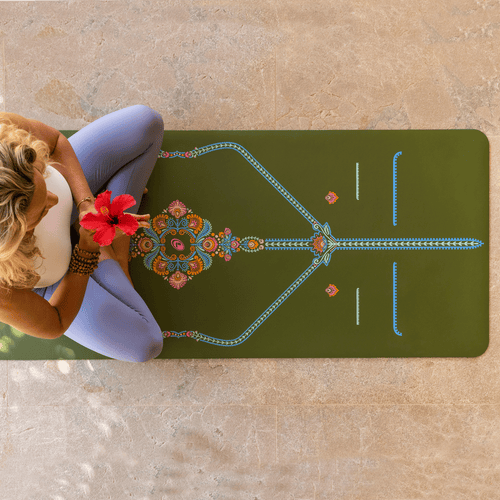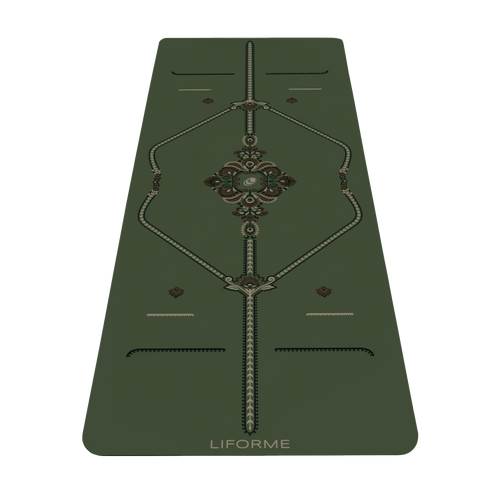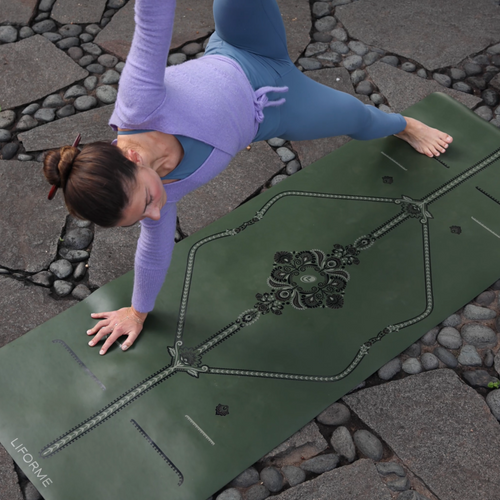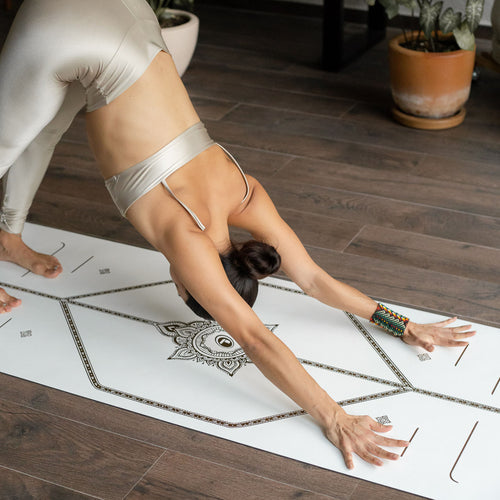When your yoga practice calls for a grounding, relaxing hip-opener, Supta Baddha Konasana answers.
Often practiced in Restorative, Yin, and Prenatal Yoga, Reclined Bound Angle is highly adaptable with the use of props, making it beneficial for yogis of every level, including beginners.
Step-by-Step Instructions for Supta Baddha Konasana
1. Begin in a seated position with your knees bent and the soles of your feet on the floor.
2. Let your knees naturally open to either side and bring the soles of your feet to touch. This is Cobbler’s Pose (Baddha Konasana).
3. If there is a lot of space between your knees and the floor, take a block or a folded blanket under each knee for support.
4. Lean back and come onto your elbows. Then lie down all the way onto your back.
5. Adjust your position so that you are comfortable.
6. Bring your arms to your sides with your palms facing upwards, or take your hands on your belly.
7. Close your eyes and breathe naturally for up to ten minutes.
🧘 Tip from a Yogi
"You can also begin lying down with your knees bent and soles of your feet on the floor, then open your knees and bring your soles together. Either entry works, so pick the one that feels best to you and use props to get comfortable."

Supine Bound Angle Pose Basics
Sanskrit meaning: Supta (Reclined) Baddha (Bound) Kona (Angle) Asana (Pose)
Yoga level: Beginner
Pose type: Reclined
Pose category: Hip opener, heart opener, restorative
Common props: Bolsters, yoga blocks, folded blankets, eye pillow
Benefits of Supta Baddha Konasana
- Gently opens hips and inner thighs
- Promotes stress relief and deep relaxation
- Can ease menstrual discomfort
- Encourages diaphragmatic breathing
- Ideal for prenatal and postnatal yoga
Reclined Bound Angle Pose Modifications
Supta Baddha Konasana can be made deeply restorative with the use of ample props. In Restorative Yoga, props are used to support your body to promote relaxation. Some options:
1. Support your back and open your heart
Place a bolster or rolled blanket along the Central Line of your mat.
Come to sit with your butt touching the bolster.
When you recline, the bolster supports your spine.
2. Support your knees and hips
Placing a block under each knee allows your hips to relax.
Unfold a blanket and roll it longways. Take the centre of the long roll over your feet. Pass each side under each knee.
3. Pregnancy-Friendly Modification
It’s often not comfortable to lie on your back on the floor in later pregnancy. To prop yourself up, use two blocks and a bolster. Place one block on the tallest height at the end of your mat. Take the other block on the medium height, about a foot away from the tall block. Place the bolster on top of both blocks so that it forms a ramp for your back when you recline.
Preparatory Poses

Bound Angle Pose (Baddha Konasana)
Begin to open your hips and stretch your inner thighs.
 Revolved Abdominal Twist (Jathara Parivartanasana)
Revolved Abdominal Twist (Jathara Parivartanasana)
While reclined, take your legs first to one side and then the other before opening your knees to either side.
Counter Poses
 Wind-Relieving Pose (Pavanamuktasana)
Wind-Relieving Pose (Pavanamuktasana)
Hug your knees to your chest to neutralise your hips and lower back.

Corpse Pose (Savasana)
Relax fully and release all tension from your legs, letting the feet fall out naturally.
Why We Practice Supta Baddha Konasana
You can adapt Supta Baddha Konasana to suit your purpose. A more Yin approach allows gravity to work on your connective tissues, so use fewer props. If you want a Restorative experience, you can really go to town and use all the props.
In either case, use this opportunity to connect to your breath and let your body stretch passively. A series of supine poses is a great way to end our practice and transition to final relaxation.
Reclined Bound Angle Pose FAQs
Is Supta Baddha Konasana suitable for beginners?
Yes, it is! Yoga students of all levels can benefit from this pose. Don’t be shy with the props!
Can I practice Supta Baddha Konasana during pregnancy?
In most cases, yes. If lying on your back has become uncomfortable or contraindicated, use blocks and bolsters to create a raised support for your back. You can also practice this pose seated with your back against the wall.












